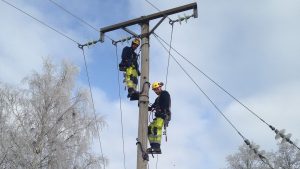At the end of 2020, we expect 5G handset sales (15–20 million units) to represent approximately 1 percent of all smartphone sales, with sales taking off in 2021, the first year in which retailers will sell more than 100 million 5G handsets.
The most noticeable benefits of these first 5G networks for users will be faster speeds than today’s 4G technology: peak speeds of gigabits per second (Gbps), and sustainable speeds estimated to be in the hundreds of megabits per second (Mbps).
New wireless technologies always offer faster speeds, but speed can mean at least three different things: speeds achieved in the lab or in limited trials, peak speeds achieved in the real world under ideal conditions, and the speeds that real users in the real world achieve on average.
Although 5G is still in its early days, there is some data indicating what each measure is likely to be. The fastest-ever 5G lab transmission has been 1 terabit per second, and the record for a field trial currently stands at 35 Gbps.
Neither is a good indicator of real-world speeds in the short term, although longer-term projections are that 20 Gbps may be an achievable real-world peak speed.
5G under real-world conditions will likely be slower than 35 Gbps but still markedly faster than 4G networks—and also faster than some fiber and cable solutions.
In general, peak speeds of more than 1 Gbps are likely, although that would only be for someone ideally situated, very close to the transmitter, and using the network when it was not busy.
Nonetheless, according to simulations, median data speeds would surge with the upgrade to 5G, based on the cell-site locations and spectrum allocations of two current networks.
One simulation based on a Frankfurt-based network estimated a ninefold increase in median speed, from 56 Mbps to 490 Mbps. Another test based on a San Francisco network calculated a 20-fold increase, from 71 Mbps for a median 4G user to 1.4 Gbps for a median 5G user if using mmWave coverage.
As with real estate, achieved speeds will come down to location, location, and location!
Speed is not the only benefit of 5G networks, of course. Another additional potential benefit is lower latency: the time it takes to send a message from a device to the network and get the answer back.
4G networks average latencies of around 60 milliseconds (ms), although there can be considerable variation, and 4G latencies could theoretically be lower than that. But 5G networks will have, in time, a latency of less than 1 ms.
Even in 2019, 5G will have lower latency than that of the average 4G network—and although 5G’s average latency may not be much lower than that of 4G, the worst-case latency will likely be much better.
In 5G field trials, real-world latency has been “as low as 9 ms,” although it is unclear what the average latency will be on the commercial networks that expect to launch in 2019; 20–30 ms seems like a plausible figure.










